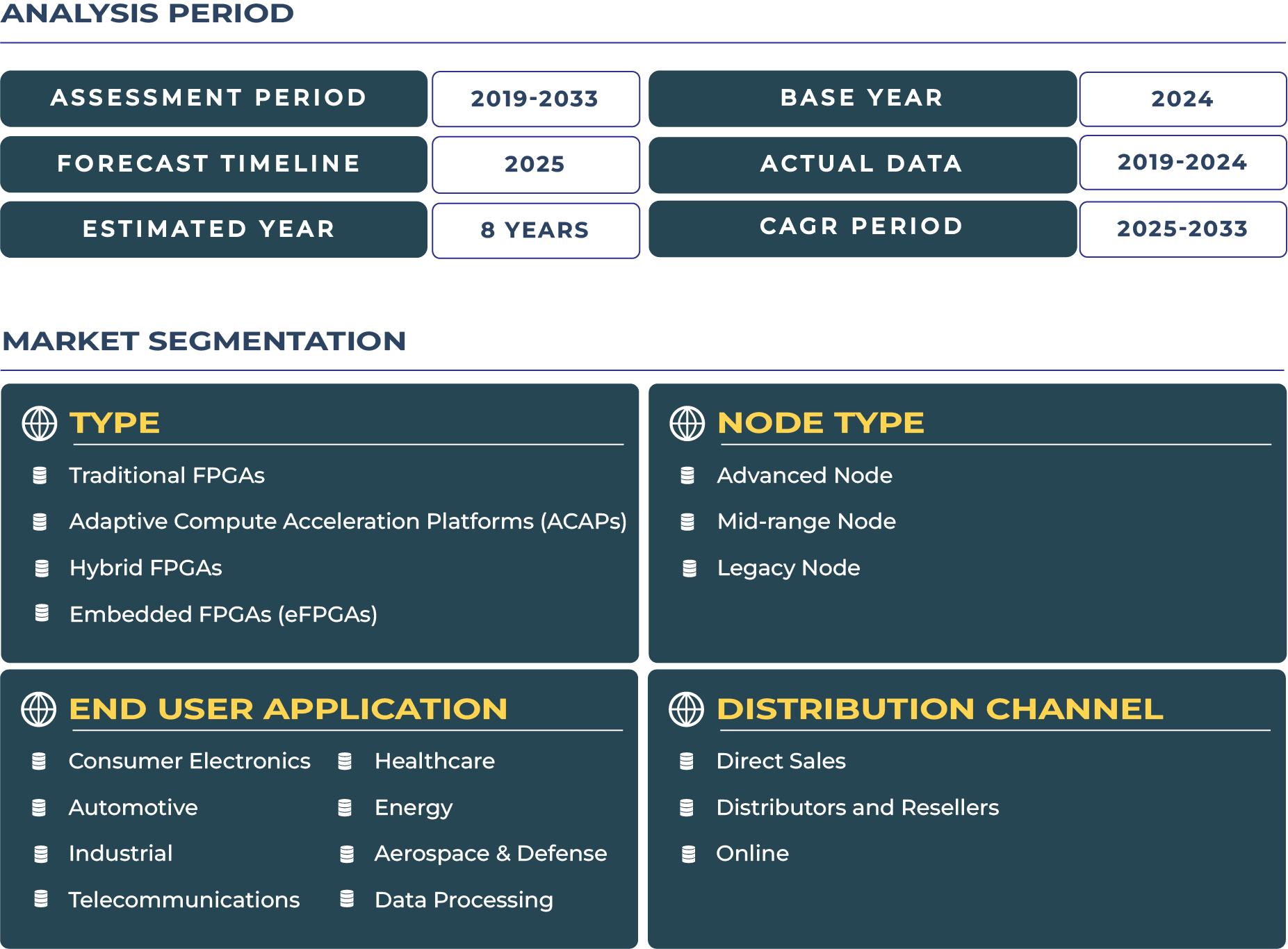Report Format:
![]()
![]() |
Pages: 110+
|
Pages: 110+
Italy Generative AI FPGAs Market Outlook
Italy Generative AI FPGAs market is poised for transformative growth, fueled by strategic government initiatives, deep-tech investments, and a rising demand for high-performance, low-power AI hardware. As per David Gomes, Manager – ICT, the Italian FPGA segment linked to generative AI applications is projected to grow at a CAGR exceeding 16.8%, supported by Italy’s increasing role as a semiconductor manufacturing hub within the European Union. A major catalyst for this growth is the €3.2 billion investment by Singapore-based Silicon Box in a state-of-the-art chiplet packaging and AI-enablement plant in northern Italy. Once operational, this facility is expected to generate over 1,600 jobs and play a critical role in enabling modular semiconductor designs optimized for generative AI workloads, such as large language models and neural network inference at the edge.
This move aligns with Italy’s broader ambition to become a microelectronics powerhouse in Europe, especially after missing earlier opportunities with other global semiconductor leaders. Industry Minister Adolfo Urso’s $10.7 billion national strategy signals a clear intention to integrate Italy into the global chip supply chain. These developments also dovetail with the European Commission’s recent approval of €1.3 billion to establish a cutting-edge semiconductor packaging and testing center in Novara, reinforcing the EU’s Chips Act and its goal of achieving 20% global semiconductor market share by 2030.
Generative AI workloads, particularly in industrial automation, healthcare diagnostics, and autonomous mobility, demand ultra-low-latency and energy-efficient computing. Field Programmable Gate Arrays (FPGAs) offer a reconfigurable hardware substrate that excels in parallel data processing, post-deployment updates, and on-device AI inference—key benefits for edge deployments. This makes them a crucial technology for industries embracing Gen AI, especially where real-time decision-making is vital. Italy is leveraging this technological shift by aligning its industrial policies to attract foreign semiconductor investors and encourage domestic R&D collaboration. The “AI Factories” initiative proposed by Italy, designed to serve as innovation hubs for generative AI development, illustrates this vision by providing infrastructure, regulatory clarity, and collaborative space for engineers and researchers to build next-gen AI applications.
Global players like Synopsys and Cadence are advancing AI-powered Electronic Design Automation (EDA) tools, allowing engineers to leverage generative AI for tasks like automated bug detection, predictive modeling, and design co-pilot features. Italian companies and academic institutions are beginning to integrate such tools into FPGA development cycles, reducing time-to-market and improving the power-performance-area (PPA) metrics of AI hardware. With Silicon Box’s facility expected to process 10,000 advanced packaging panels weekly by 2033, Italy’s role in Europe’s AI hardware stack is set to be both strategic and foundational.
Expert commentary from semiconductor executives highlights the importance of balancing design automation with data security and intellectual property protection. “FPGAs offer unmatched flexibility in prototyping generative AI algorithms at the hardware level,” notes a senior AI chip architect based in Milan. “With the EU’s regulatory frameworks ensuring trust and transparency, Italy can become a design-safe haven for global AI hardware players.” This sentiment is echoed by investors like Lam Capital and TDK Ventures, who contributed to Silicon Box’s $200 million funding round, emphasizing confidence in the European semiconductor resurgence.
This ecosystem is bolstered by cross-sector interest—from automotive leaders integrating FPGA-based AI into ADAS systems to telcos prioritizing low-latency processing for real-time analytics. Italy’s competitive advantage lies not just in infrastructure but in the intersection of policy, investment, and technical capability. The flexibility of FPGAs to accommodate evolving generative AI models, coupled with government-backed workforce training in automation and robotics, ensures that Italy is not merely a production node but a future-proof innovation center.
Authors: David Gomes (Manager – IT)
*Research Methodology: This report is based on DataCube’s proprietary 3-stage forecasting model, combining primary research, secondary data triangulation, and expert validation. [Learn more]
Italy Generative AI FPGAs Market Scope







